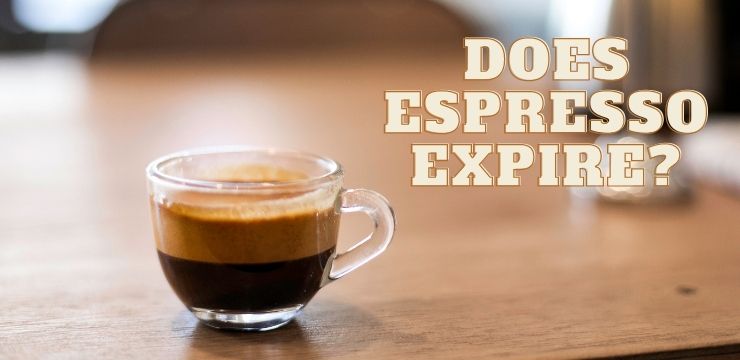Like many of the finer things in life, producing the perfect espresso is very simple, requiring only coffee and water, but simultaneously requires precision to ensure that you get it just right. As such, there are a number of ‘espresso rules’ to be followed from grind size to getting the correct extraction temperature. One such rule is that you only have 10 seconds to start drinking your espresso straight or to incorporate it into an espresso based drink, often using water or dairy products.
Much beyond this period of time, it is widely believed that the espresso expires or dies. It’s not just a handful of eccentric coffee-heads that follow this rule either, trainee baristas at big name coffee branches such as the ubiquitous Starbucks have this rule drummed into them right from the beginning of their training. Read on to discover what is actually meant by a coffee expiring and whether there is any truth to this espresso rule.
Anatomy Of An Espresso
In order to understand what is meant by expiring coffee or going ‘dead’, one should first consider what a very much alive, fresh espresso looks like. Espresso is a drink made by grinding coffee beans coarsely then passing hot water under pressure through them. The heat and pressure from the steam, forces the oils and compounds responsible for aromas and flavors of coffee to be extracted, producing a highly concentrated beverage. Any coffee connoisseur will tell you that an espresso is composed of the following three layers:

1) THE HEART
This is the bottom most layer and is a rich, dark brown. This is where the more acidic qualities of the espresso lie.
2) THE BODY
The middle layer is the largest component and is a caramel or toffee shade of brown. It is this layer that carries many of the distinctive flavors and aromas we associate with an espresso. The body is itself composed of three components;
- Soluble solids: contributes to the strength and overall flavor of an espresso
- Soluble gases: largely responsible for an espresso’s aroma
- Insoluble gases: helps produce the silky feel and body of the drink.
3) THE CREMA
Crowning an espresso is the crema, a creamy white bubbly layer. The crema is mostly composed of oils extracted from the ground beans and carbon dioxide. The oils make the crema the most bitter part of the drink.
Some believe that it is disruption to this trilogy that makes for an expired or dead espresso and after 10 seconds have elapsed, these layers will blend together into a bitter and unpleasant mass of uniform black. The taste of an expired espresso has been described as ‘ashy’ or ‘burnt’, certainly unpleasant. What might be going on here?
How Time Changes An Espresso Drink
Time is said to be the great teacher and executioner and the latter is true for an espresso, at least to a certain extent. If you were to leave a freshly made espresso out on the counter, the first thing you would notice is that the crema gradually disappears and blends into the rest of the coffee. This is because as it cools, the water in the expresso evaporates disrupting the tight network of micro bubbles that formed the crema. As this happens, those emulsified oils blend into the drink leaving a bitter taste.
As time goes on, various chemical reactions occur in the espresso that changes its taste. That mixture or solids and gases found in the body will eventually oxidize leading to that ashy ‘dead’ taste.
The Flip Side
Despite the fact that as detailed above, time really does change the taste of an espresso, these processes themselves take time, longer than 10 seconds. Additionally, temperature plays a role in how flavor is perceived. It has been shown that we perceive flavors much better the closer what we are consuming is to body temperature. Sodas demonstrate this well; when drunk as intended straight from the fridge, the beverage is refreshing and crisp but as it heats up to room or body temperature, we taste it for what it really is, saccharine sweet which is perhaps, not such a refreshing taste.
The same applies to drinking an espresso; drunk scalding hot, you might not be able to enjoy the complexity of flavors to the same extent that you can more easily appreciate as the drink moves towards body temperature (not to mention a burnt tongue).
Summary
Like many coffee rules, the 10 second rule lies somewhere between science and dogma. The more cynical may say that the rule was developed by coffee chains trying to increase the speed and productivity of their workers. Whilst the taste of an espresso certainly changes over time, to make a noticeable change, you’re probably looking more in the region of minutes than seconds, a perfect excuse to enjoy your cup at a more leisurely pace.
